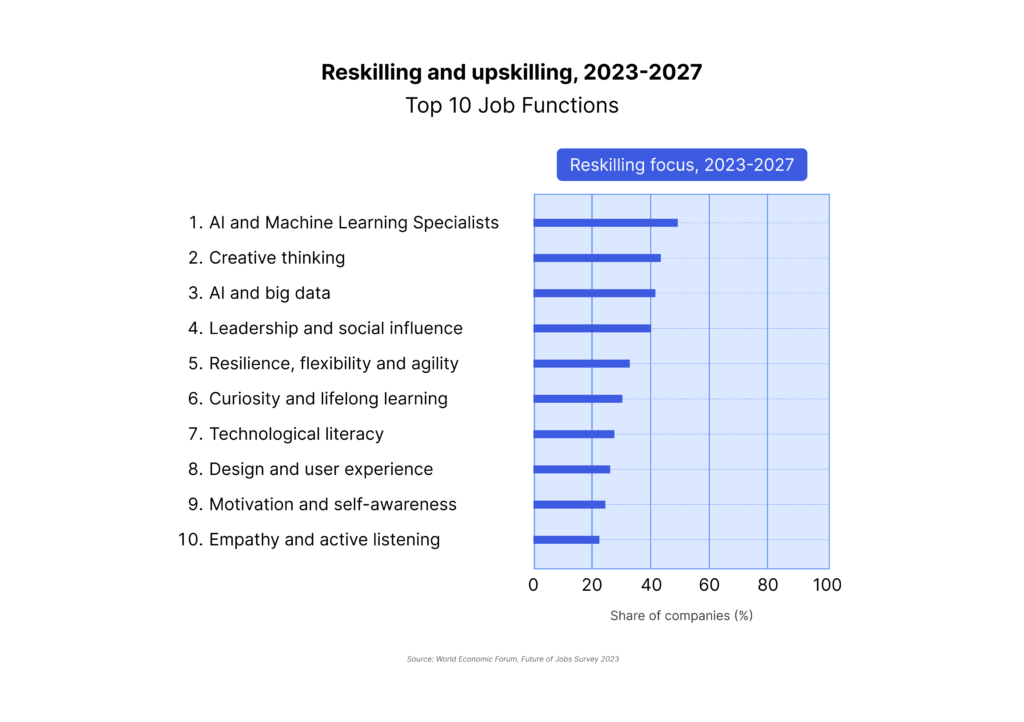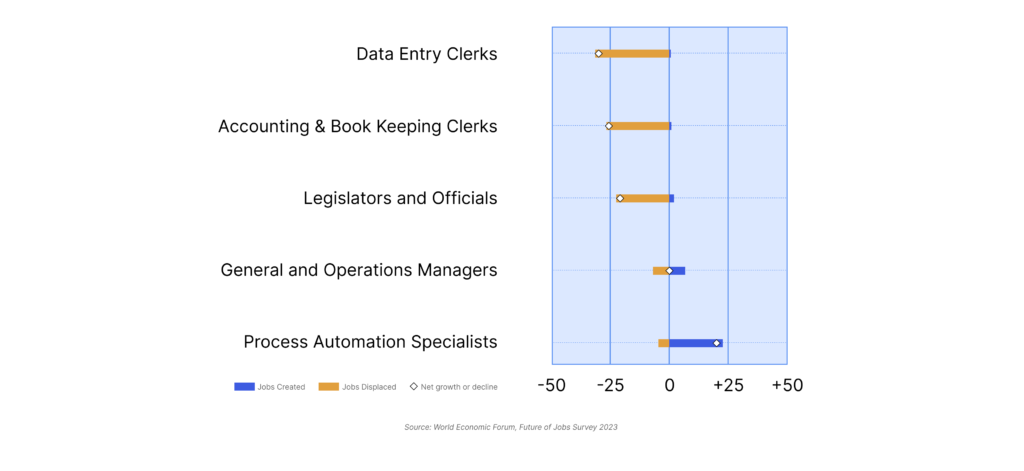The Impact of AI on Operational Leaders

How AI Intersects with Operations

The Evolution of AI
The progression of AI within operations from automating routine tasks to enabling sophisticated, predictive decision-making represents a leap towards redefining operational efficiency. This evolution underscores a shift from task automation to strategic enhancement, where AI’s role transcends mere assistance to become a cornerstone of operational innovation.

How AI Changes the Future of Work
Opportunities for Operational Leaders
Data Protection and Unit Economics
Summary
AI Use Cases in Operations

Administrative Assistants

Knowledge Banks

Supply Chain & Unit Economics
AI Job Trends

Looking for the Perfect Remote AI Job?
This interactive chart showcases the relationship between continents and work arrangements. If you are looking for a remote, or work-from-home AI job, this visualization will help you make informed decisions.


Key Insights in AI Jobs
The analysis of in-demand AI roles across continents reveals a significant variation, with Data Engineering roles exhibiting the highest demand in several regions. Specifically, South America, North America, and Europe report the largest proportions of Data Engineering roles, accounting for 38.89%, 24.44%, and 22.87% respectively. This indicates a robust need for systems that facilitate efficient data collection and highlights the critical importance of data infrastructure in the AI landscape.
Furthermore, the data suggests a geographical concentration of AI roles, with a predominance of opportunities stemming from North American employers. This regional skew is also reflected in salary distributions, where North American AI professionals command the highest median salary at 150,000 USD, suggesting a premium on AI expertise within this market.
Contrastingly, while Asia exhibits a lower median salary compared to other continents, the upper quartile of earnings is notably competitive, aligning closely with senior-level and CXO roles in European and North American contexts. This disparity may indicate a more pronounced salary progression for AI professionals in Asia, emphasizing the value placed on experience and higher-level expertise within the region’s AI sector.
Senior AI roles in Asia show a distinct trend concerning working arrangements and remuneration. There is a marked preference for ‘On-Site’ work, which is associated with significantly higher salaries compared to ‘Work from Home’ arrangements, with figures reported at 417.9k USD and 300k USD respectively. This contrasts with the salary structures in Europe and North America, where maximum salaries are maintained with negligible differences between ‘Work from Home’ and ‘Hybrid’ work settings. This indicates a more flexible approach to working arrangements without a substantial impact on salary levels, potentially reflecting a cultural or organizational shift in work dynamics within the AI industry in these regions.
The findings from this data set underscore the complexities and regional nuances within the global AI job market, highlighting the interplay between job roles, geographical locations, and working arrangements in determining salary expectations and professional demand.

Attrition & Growth of Jobs Due to AI

Select top 3-5 impacted jobs functions, use a mix of positive and negative (growth vs loss)
- Data Entry Clerks
- Accounting & Book Keeping Clerks
- Legislators and Officials
- General Operations Managers
- Process Automation Specialists

AI Reskilling & Upskilling
As AI reshapes the workplace, companies are strategically prioritizing upskilling to foster high-level cognitive and emotional intelligence skills, which remain indispensable in the AI-augmented future. Analytical thinking tops the upskilling agenda, designated to receive 10% of training initiatives, highlighting the critical need for professionals to interpret and leverage the complex information produced by AI. Creative thinking follows, reflecting the demand for innovative problem-solving that transcends AI’s capabilities.
Despite their current standing, AI and big data skills, along with leadership and social influence, are being prioritized more significantly than other skills in corporate upskilling strategies, with a notable investment of 9% in reskilling efforts dedicated to them. This suggests a strategic emphasis on developing expertise that not only utilizes AI but also steers its direction and integration within organizations. Companies are recognizing the necessity of these skills to navigate the intricacies of AI deployment and drive technological advancement.
In contrast, despite the recognized present importance of self-efficacy skills following recent disruptions, such skills are projected to receive less emphasis in future strategies. Instead, there is a clear shift towards technology skills, particularly in AI and big data, which underscores the strategic need for technical fluency amidst advancing automation.
This recalibration towards technical upskilling, alongside the cultivation of high-level complex skills, underscores a dual-focused approach. Professionals are expected to command both the nuanced, human-centric skills that AI cannot replicate and the technical acumen to effectively collaborate with AI systems. The corporate upskilling trajectory thus reveals an acute awareness of the evolving symbiosis between human intelligence and artificial intelligence, with the goal of harnessing the best of both to drive innovation and competitive advantage in the workforce of tomorrow.
AI Courses for Operations

Fast Track to Mastering AI

UBI Msc in AI & ML Management

